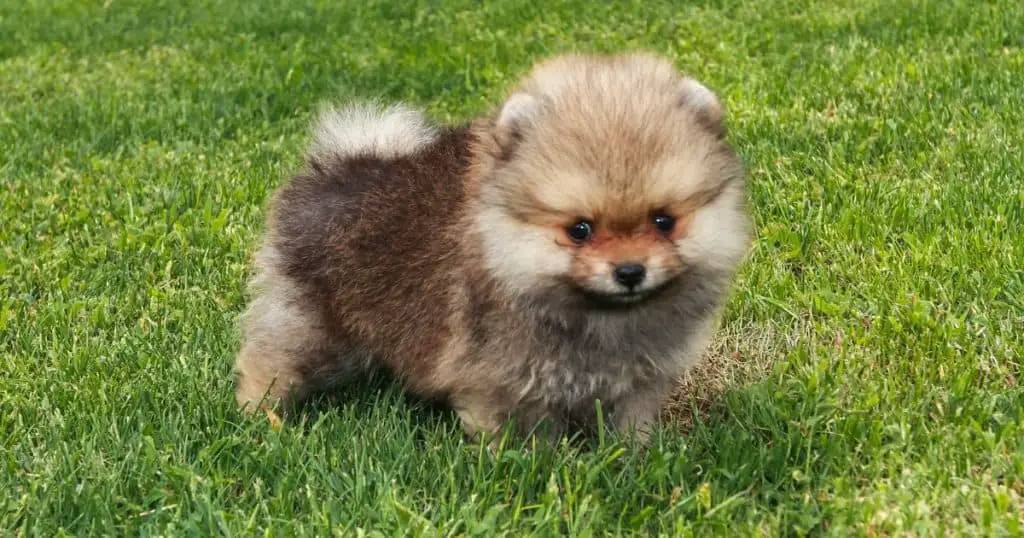What to Know
Are you a proud owner of a Pomeranian puppy, or planning to bring one home soon? Understanding your Pomeranian’s growth chart is vital for keeping your fluffy companion healthy and thriving throughout their various life stages. So, let’s dive into the fascinating world of Pomeranian growth charts and learn how they can help you track your puppy’s development.
As a Pomeranian parent, it’s natural to want the best for your little bundle of joy. Keeping an eye on their growth will help you ensure they’re maturing properly and identify any potential health issues early on. The good news is that tracking your Pom’s growth doesn’t have to be difficult, and we’re here to guide you every step of the way.
To get started, you’ll want to familiarize yourself with the seven recognized Pomeranian puppy growth stages, ranging from neonatal to adulthood (Pomeranian.org). With this knowledge in hand, you’ll be better equipped to support your fur baby’s journey and keep a watchful eye on their development. Cheers to nurturing a happy and healthy Pomeranian by your side!
Understanding Pomeranian Growth Stages

As a Pomeranian owner, it’s important to familiarize yourself with your pup’s growth stages to better understand their development and needs. Let’s explore the key Pomeranian growth stages in more detail.
Birth to 3 Months
During the neonatal period (birth to two weeks), your Pomeranian will be tiny, fragile, and completely dependent on their mother. Next, in the two to three weeks transitional period, their eyes and ears will open, allowing them to start exploring the world around them.
From three to twelve weeks, your puppy enters the socialization period. In this stage, it’s crucial to expose them to different people, animals, and experiences, fostering a confident and well-adjusted adult Pom.
3 to 6 Months
During this phase, your Pomeranian will begin to transform into a playful and active dog. Most of their growth will occur in the six- or seven-month mark, so you might notice a significant increase in size.
It’s also important to establish a routine and begin basic obedience training in this stage, strengthening the bond between you and your Pom.
6 to 9 Months
At this stage, a six-month-old Pomeranian should be close to their full adult size. However, your pet may continue to fill out until their first birthday.
Stay consistent with training and socialization during this period, as your Pom is still developing their manners and behavior.
9 Months to Adulthood
Finally, once your Pomeranian reaches twelve to fifteen months old, they should be fully grown. Adult Pomeranians range from 7 to 13 inches in height and weigh 2.4 – 6 lbs (1 – 2.7 kg) for males, while females should be 6 to 11 inches in height and weigh 2 – 5 lbs (0.9 – 2.2 kg).
Keep reinforcing positive behaviors, and you’ll be rewarded with a loving, happy, and well-behaved adult Pomeranian!
Pomeranian Growth Chart Overview

As a Pomeranian owner, it’s important to understand the growth chart of your beloved pooch. In this section, let’s explore the growth chart, weight ranges, and how to determine your Pom’s size category.
Weight Ranges
Typically, Pomeranians weigh between 3 and 7 pounds as adults, according to the American Kennel Club. Male Poms can grow from 7 to 13 inches in height and weigh 2.4 – 6 lbs (1 – 2.7 kg) as adults. Female Poms can be 6 to 11 inches in height and weigh 2 – 5 lbs (0.9 – 2.2 kg) when fully grown, as mentioned on PomsCare.
Determining Your Pomeranian’s Size Category
To estimate your Pomeranian puppy’s adult size, you can use their weight at the 2-month mark. The formula to calculate the adult size is by multiplying the 2-month weight by 3, and then adding a number ranging from .5 to 1.25PetPom.
For larger pups weighing 2.5 lbs and above, multiply the weight by 4. Keep in mind that these formulas provide an estimate, and your Pom’s adult size may vary slightly. Generally, Pomeranians stop growing around one year of age, but they can continue to fully mature until 15 months old.
Factors Affecting Pomeranian Growth

Let’s explore the various factors that can influence your Pomeranian’s growth.
Genetics
Just like with humans, your Pomeranian’s genetics play a crucial role in their growth. A pup’s inherited traits from their parents can determine their overall size and growth rate. So, it’s a good idea to take a look at the parents’ size and stature to get an idea of what your Pomeranian may grow up to be.
Nutrition
Proper nutrition is essential for the healthy growth of your Pomeranian. Feeding them a balanced, high-quality diet will ensure they receive all the necessary nutrients for their development. Be careful not to overfeed, though, as this can lead to unhealthy growth and weight gain. Keep an eye on portion sizes and adjust as needed, based on your Pomeranian’s age, weight, and activity level.
Exercise
Regular exercise is vital to support your Pomeranian’s growth and overall well-being. Not only does it help keep them physically fit, but it also promotes proper bone and muscle development. Make sure to engage in age-appropriate activities that are not too strenuous, and provide enough opportunities for play and socialization.
Health Conditions
Unfortunately, some health conditions, such as parasitic infections, can affect your Pomeranian’s growth. These parasites can hinder their ability to absorb nutrients, leading to stunted growth. Keep an eye on your pup’s health and consult your veterinarian if you notice any signs of illness or slow growth.
Remember, it’s essential to keep these factors in mind to ensure your Pomeranian reaches their full growth potential. Keep up with their needs, and that adorable little ball of fluff will grow into a healthy, happy adult Pomeranian.
How to Monitor and Support Healthy Growth
Keeping track of your Pomeranian’s growth and development is essential for ensuring a healthy, happy life. In this section, we’ll discuss how to monitor and support your Pomeranian’s healthy growth with regular vet checkups, proper nutrition, and appropriate exercise.
Regular Vet Checkups
Establishing a relationship with your veterinarian is crucial in maintaining your Pomeranian’s health. Scheduling regular checkups allows your vet to monitor growth and developmental milestones, as well as identify any potential health issues early on.
It’s essential that your Pomeranian receives vaccinations, dental care, and routine screenings for potential hereditary issues like eye cataracts.
Proper Nutrition
Your Pomeranian’s diet is a key factor in fostering healthy growth. Choose a high-quality, well-balanced dog food formulated specifically for small breeds.
- Make sure the food is rich in protein to support muscle development.
- Include essential vitamins and minerals for strong bones and teeth.
- Remember to monitor your dog’s weight closely and adjust serving sizes as needed.
Consult with your vet to determine the best nutritional plan suited for your Pomeranian’s specific needs.
Appropriate Exercise
Regular exercise is vital for your Pomeranian’s health and well-being. However, it’s important to choose activities that are suitable for this small breed.
Try incorporating short walks or play sessions with toys that promote mental and physical stimulation.
Remember, it’s crucial not to over-exert your Pomeranian, as excessive exercise could result in injury or stress on their developing body.
By following these guidelines, you can confidently support your Pomeranian’s healthy growth and enjoy many years of companionship with your furry friend.
When to Seek Veterinary Advice
In your Pomeranian’s growth journey, it’s essential to stay vigilant and recognize any warning signs of growth issues. Keeping an eye on your pet’s development can help you act quickly to provide the necessary care and treatment.
Warning Signs of Growth Issues
Being aware of some common warning signs can help you determine if your Pomeranian is experiencing growth problems.
- Unusual Weight Gain or Loss: If your Pomeranian’s weight suddenly changes, this could indicate a potential issue. Compare your pet’s weight to the Pomeranian Growth & Weight Chart to check if their growth is on track.
- Stunted Growth: If your Pomeranian isn’t growing at a typical pace, or has stopped growing earlier than expected, consult your veterinarian. Pomeranians typically reach their adult size by 12 to 18 months.
- Limping or Difficulty Walking: If your Pomeranian shows signs of discomfort, limping, or difficulty walking, it’s a good idea to seek veterinary advice. This can be an indication of joint or bone issues relating to growth.
- Loss of Appetite: If your Pomeranian suddenly loses interest in food or doesn’t seem to be eating enough, it could signify a problem with growth or health.
Always trust your instincts when it comes to your pet’s well-being. If something doesn’t seem right with your Pomeranian’s growth or behavior, consult your veterinarian for guidance.
Before You Go
In the end, tracking your Pomeranian’s growth is essential to ensure their health and well-being. Keep in mind, weight ranges can differ, but on average, adult Pomeranians should weigh between 3 and 7 pounds. However, some Poms may reach an adult weight of 7.5 to 10.5 pounds or more.
As you monitor your Pom’s growth, remember that they typically stop growing by 15 months of age. During this journey, you’ll witness several important Pomeranian growth stages, from the Neonatal period to adulthood.
By understanding your Pomeranian’s growth chart and size, you’ll be better equipped to ensure that your furry friend stays healthy and happy. So, enjoy this beautiful journey with your Pom, and don’t forget to cherish each moment!
Related Articles:

